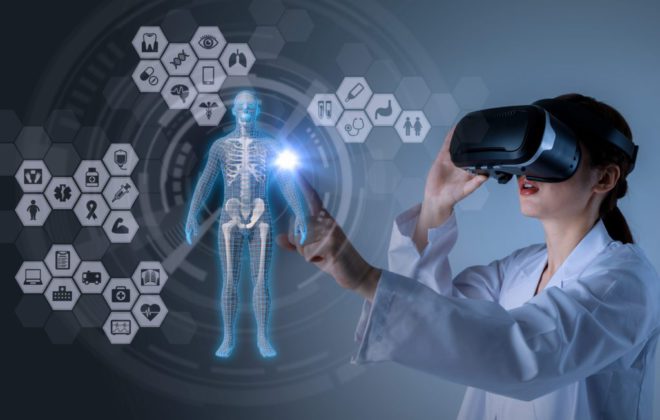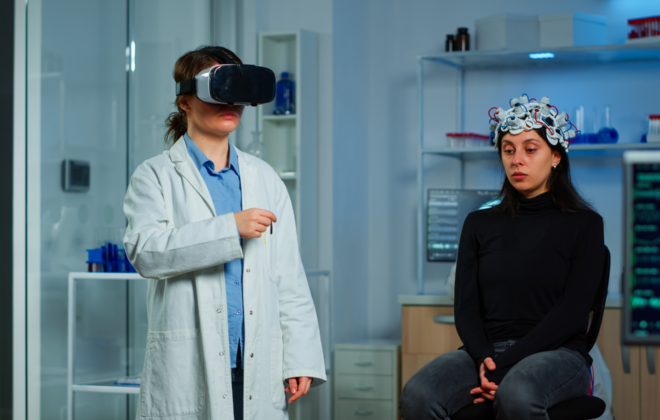Empowering Patients-The Role of Interactive Demonstrations in Medical Device Education
As the healthcare industry is moving forward to the latest technologies, interactive patient demonstrations are a must development needed so far. Of course, patient medical device education and counseling are to educate them about diseases, procedures, and the treatments followed.
It is not only to educate but also to enhance compliance with medical treatment regimens. Implementing Interactive patient demonstrations will promote healthy lifestyles for patients. The concept of interactive patient education and counseling is a needed development to implement in healthcare industries for the future as well.
Objective:
The objective of this article is to discuss the role of interactive demonstrations in medical device education, and how to improve it. The article aims to deliver an in-depth understanding of interactive patient demonstrations, the importance of patient education in medical devices, techniques and technologies to use in interactive demonstrations, benefits of interactive demonstrations, implementing strategies for healthcare providers, challenges, and considerations, along with case studies.
Importance:
As healthcare and technology continue to circulate, proper communication and interaction for patients is required. Medical device education is increasingly taking place via the latest technologies. As a result, interactive patient demonstrations and counseling are highly welcome. Implementing medical devices for better interaction has so many benefits.
- Ease of access and convenience
- Customized and personalized
- Enhanced information retention
- Real-time feedback system
- Track progress
Understanding Interactive Patient Demonstrations
☛ What are interactive patient demonstrations?
Interactive patient demonstrations refer to hands-on digital methods to help patients gain knowledge about the disease, its procedures, and the treatments undertaken. In the traditional method, the process will be explained by the doctor via pamphlets and brochures. However, this approach leverages technology to create demonstrations of more engaging and personalized learning experiences.
Unlike traditional methods, interactive patient demonstrations are to educate about meeting patients where they are and what has to be fed to them. So they can understand and remotely use technology to learn. The latest advancement includes modern patients to find out an interactive digital world experience. So, this approach completely reflects the reality and is welcomed by the healthcare sectors.
Components:
The implementation of interactive patient demonstrations delivers a worthwhile experience to the patients and doctors. It includes key elements to be involved in delivering better communication and understanding with patients.
☛ Some key elements in interactive patient demonstrations are explained below:
- AR and VR:
Of course, VR and AR are the best technologies to help patients learn about diseases and what they will get from the treatment. They can easily connect to reality, explained one by one, for their convenience.
- Interactive tutorials:
It will guide patients to learn the symptoms, treatment, procedures and costs as well in detail. You can learn interactively with doctors by keeping the technology in your hand. So, it will guide everything by means of tutorials.
- Virtual simulations:
Patients will learn about the procedures in simulation form. With the latest technology, simulations will bring you so many advancements in learning.
Importance of Patient Education in Medical Devices
☛ Patient empowerment:
Patient empowerment in interactive demonstrations has to bring greater control and responsibility over healthcare decisions and actions. Patient education in medical devices is set to help them gain enough knowledge. Patient empowerment is a process where patients gain response over their healthcare decisions.
Patient empowerment emphasizes the patients ‘ involvement in their care and treatment. In the healthcare process, it includes activities such as health education, encouraging involvement, promoting self management skills, and support to make informed decisions.
☛ Compliance and adherence:
Patient adherence and compliance are often used to make doctors and patients interact wisely. In most cases, they have different connections and get active behavior, respectively. In the realm of compliance and adherence, interactive patient demonstrations successfully navigate the challenges and ensure effective assessments.
- Know the importance of a treatment plan
- Empowered to participate effectively
- Enhance patient education practice
- Reduce barriers easier
- Improve doctor-patient relationship
- One-to-one communication
Techniques and Technologies Used in Interactive Demonstrations
In the modern day, Virtual Reality (VR) and Augmented Reality (AR) technologies are massively revolutionizing medical education and training. These have been widely used at the academic and even professional levels. Implementing AR/VR in healthcare sectors opens better opportunities for engaging the learner and even creating interactive learning experiences.
It gives the best opportunity to span synchronous and asynchronous learning sessions. Medical educators and trainers use VR and AR technologies to deliver impactful learning experiences.
☛ Simulations and gamification:
Simulations and Gamification are also used to engage the patients across learning experiences. Simulations and gamified elements are suitable for Conducting a thorough analysis of training objectives and target audience. These are significant for determining immersive learning technologies with approach.
Designing the immersive learning content involves leveraging interactive elements, aligning the learning objectives, and 3D simulations. Immersive learning tools and platforms integrated with VR, AR, and gamification offer a better training experience
☛ Mobile apps and online platforms:
Introducing Mobile learning apps for medical training helps learners gain more knowledge anytime and anywhere. Developing mobile applications and web platforms for demonstrations in medical device education makes it easier.
There are also varied AI-powered personalized learning platforms available that embrace trending technologies. It creates an adaptive, immersive, and engaging learning experience.
Benefits of Interactive Demonstrations
☛ Improved understanding and retention:
Interactive demonstrations to the patients are easier when compared to the traditional approaches. Lecturing can be an effective interactive experience, but interactive methods give the option to learn more. These improve existing knowledge and significant human experience to the maximum.
☛ Patient satisfaction and confidence:
Practical training sessions with the use of demos and training devices are suitable for easily enhancing the patient experience. These would have a positive effect on patient adherence along with compliance.
It also easily optimizes the treatment and patient outcomes while reducing the training burden on healthcare staff. Improving patient satisfaction is a significant goal for healthcare providers.
☛ Reduced healthcare costs:
Proper usage of medical devices brings fewer errors and complications and develops skills in a safe setting. For instance, simulation-based training is the most amazing strategy to reduce the error during training sessions.
Creating realistic and controlled environments lets trainees practice using medical devices. Creating patient engagement strategies with high-fidelity simulations are suitable options for gaining hands-on experience.
Implementation Strategies for Healthcare Providers
☛ Developing interactive content:
Well-structured and even comprehensive, informative, interactive content is the cornerstone of effective medical device training. It would be suitable for creating the best training modules covering all the medical equipment training. It involves basic operation, maintenance, troubleshooting, and many more.
☛ Training healthcare staff:
Creating engaging and informative interactive content with different learning styles, auditory, incorporating visuals, and giving a better experience. Instructional videos, detailed manuals, interactive simulations, and many more help trainees understand the concepts.
The healthcare industry has been transforming the way it educates and easily prepares learning demands. Staff can get interactive learning in real-time on devices.
☛ Collaborative partnerships:
Integrations, apps, VR, AR as well as other technologies are often significant investments for medical training. Shorter technical partnerships can also be used to create a positive ROI.
For instance, App development partnerships would be creating custom web and mobile applications. It also involves placing new apps across the existing marketplace.
Challenges and Considerations
☛ Accessibility and inclusivity:
Generally, accessing the interactive demonstrations is very challenging for most patients. Hence, healthcare providers must consider it and make the tools highly accessible to everyone. It may involve providing additional support and learning methods for the required patients.
☛ Privacy and security:
While using these advanced technologies, there are some concerns raised in maintaining the patient’s data privacy & security. Hence, healthcare providers should focus on this and ensure that the patient information and tools used for interactive demonstrations follow relevant regulations.
☛ Cost implications:
Implementing & developing the interactive demonstrations is very costly. Hence, healthcare providers must make sure that these tools are the best choice for their return on investment. Also, consider how these tools can be used to educate patients.
Case Studies and Success Stories
☛ Real-world examples:
Example 1: Currently, Cleveland Clinic has started using AR, VR & some other emerging technologies to let patients know how their treatment is going to be. Patients can get a great visual experience.
Example 2: Mayo Clinic started developing mobile applications that let patients get a tutorial about their treatment and other learning experiences.
☛ Lessons learned:
The case mentioned above studies focuses more on medical device training and interactive patient demonstrations to let patients take care of their health easily and revolutionize medical device education.
Conclusion
From the above mentioned scenario, now you have explored the role of interactive demonstrations in medical device education to empower patients. Through AR, VR, and other emerging technologies and app development, healthcare providers can make everything possible. Now, healthcare providers should get ready to explore & implement interactive demonstrations to improve patient care & outcomes.
Blog Categories
- 3D Animation (5)
- Company News (2)
- Design Graphics (1)
- Healthcare Operations (7)
- Industry News (9)
- Medical Training (1)
- Sales Enablement (5)
- Software Developing (3)
- Virtual/Augmented Reality (11)




